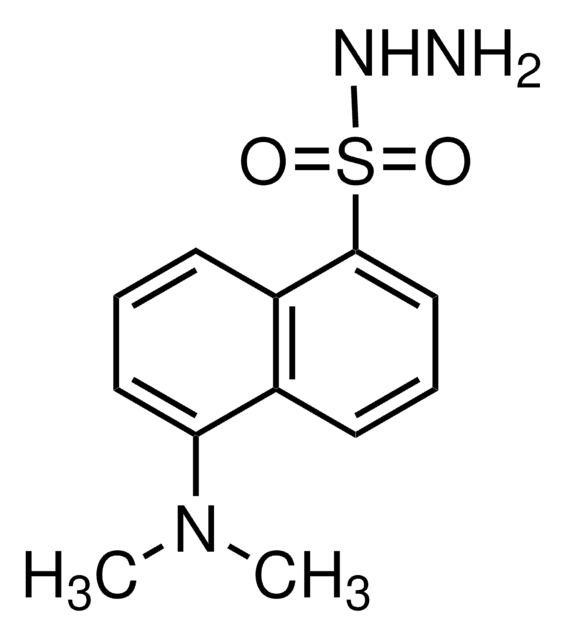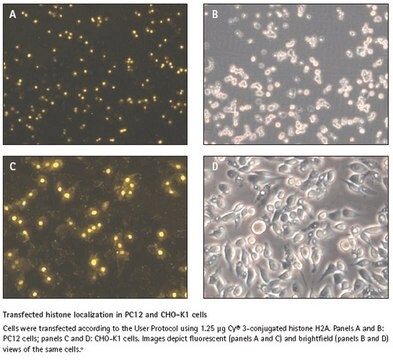L3287
Escort™ IV Transfection Reagent
Lipid reagent for transient and stable transfection of mammalian and insect cells.
Synonyme(s) :
Gene delivery
About This Item
Produits recommandés
Qualité
for molecular biology
Niveau de qualité
Forme
liquid (aqueous solution)
Utilisation
mL sufficient for 160-500 transfections
Concentration
1 mg/mL
Technique(s)
transfection: suitable
Température de stockage
2-8°C
Catégories apparentées
Description générale
Application
Caractéristiques et avantages
- Suitable for stable and transient transfection
- Optimized for a wide variety of cell lines
- Low toxicity
- Compatible with both serum and serum-free transfection protocols
- Ideal for Sf9, Sf21 and S2 insect cells
Composants
1 mg/mL total lipid in water
Note the identity of the lipids used in Escort™ IV is confidential.
Attention
Principe
Informations légales
Produit(s) apparenté(s)
Code de la classe de stockage
10 - Combustible liquids
Classe de danger pour l'eau (WGK)
WGK 3
Point d'éclair (°F)
Not applicable
Point d'éclair (°C)
Not applicable
Équipement de protection individuelle
Eyeshields, Gloves
Faites votre choix parmi les versions les plus récentes :
Déjà en possession de ce produit ?
Retrouvez la documentation relative aux produits que vous avez récemment achetés dans la Bibliothèque de documents.
Les clients ont également consulté
Articles
Transfection is the introduction of DNA, RNA, or proteins into eukaryotic cells and is used in research to study and modulate gene expression. Thus, transfection techniques and protocols serve as an analytical tool that facilitates the characterization of genetic functions, protein synthesis, cell growth and development.
This brief webinar provides an overview of what transfection is and the methods that are used to introduce DNA or RNA into eukaryotic cells.
Protocoles
Lipid Transfection Optimization Protocol
Escort™ IV Transfection Reagent Protocol
Escort™ III Transfection Reagent Protocol
Sigma's Universal Transfection Reagent is a unique formulation of a proprietary polymer blend used for transient and stable transfection of nucleic acids into various eukaryotic cell lines and hard-to-transfect primary cells. Fast and easy protocol is compatible with serum, serum-free medium and antibiotics
Notre équipe de scientifiques dispose d'une expérience dans tous les secteurs de la recherche, notamment en sciences de la vie, science des matériaux, synthèse chimique, chromatographie, analyse et dans de nombreux autres domaines..
Contacter notre Service technique








